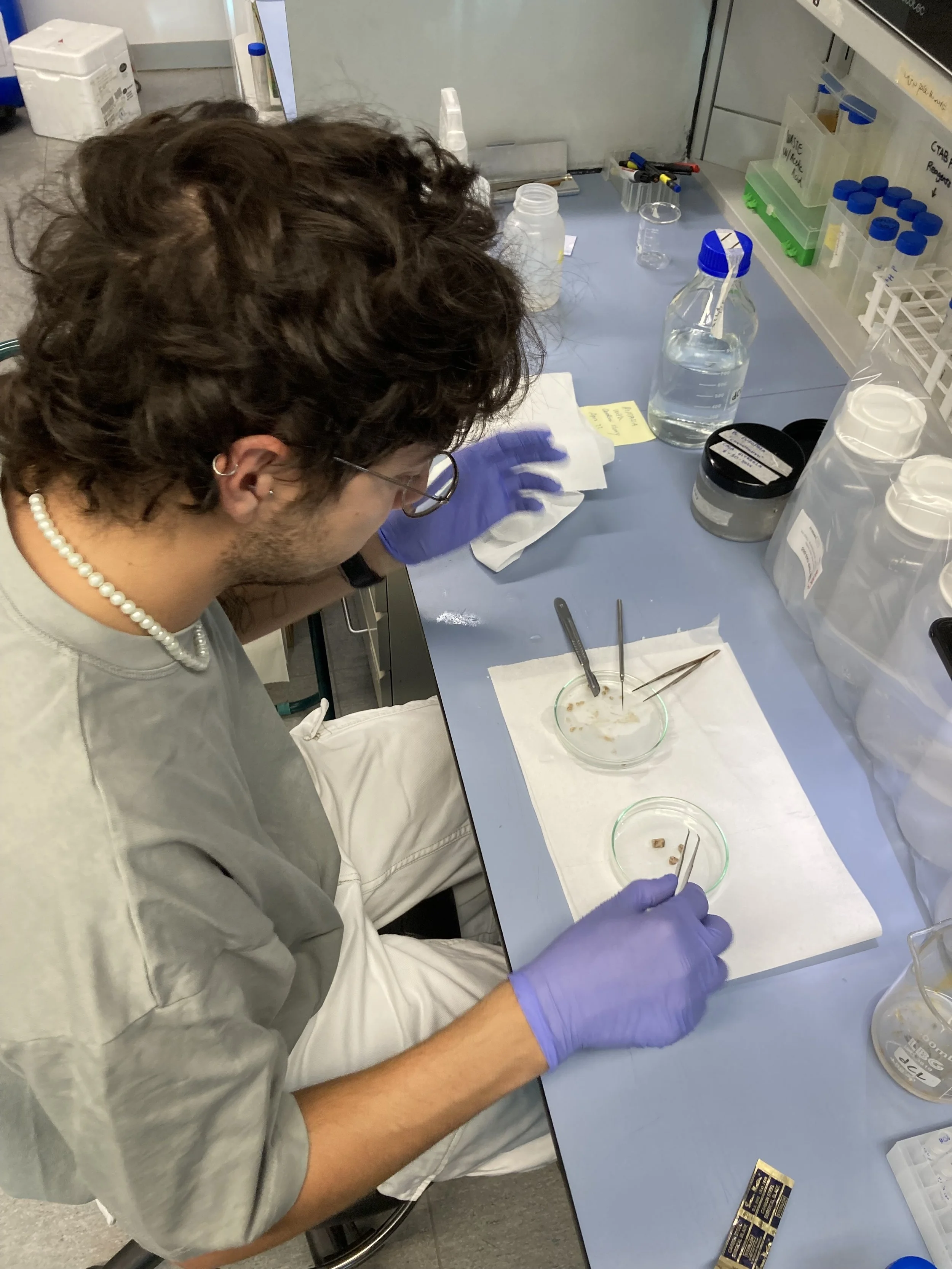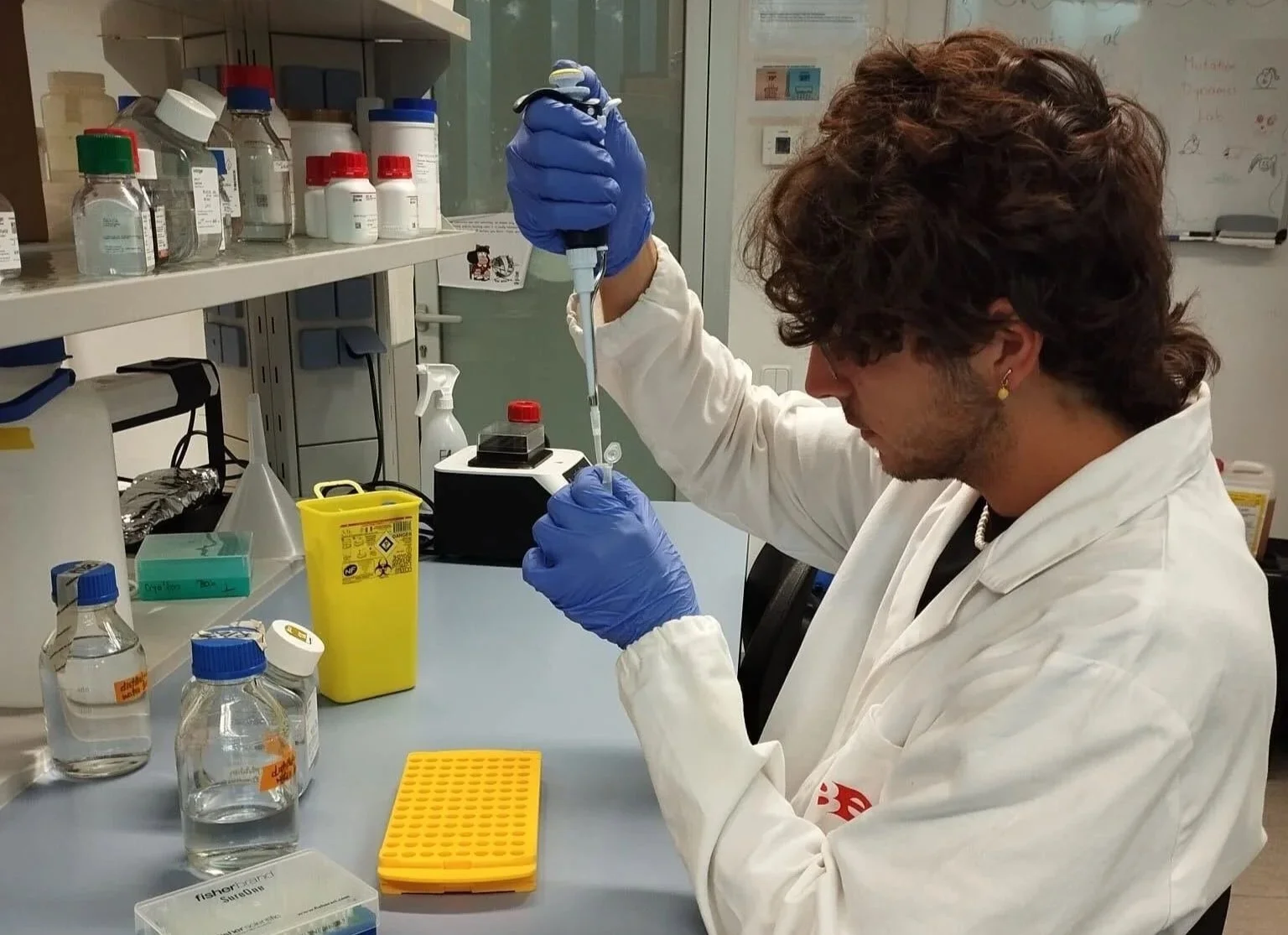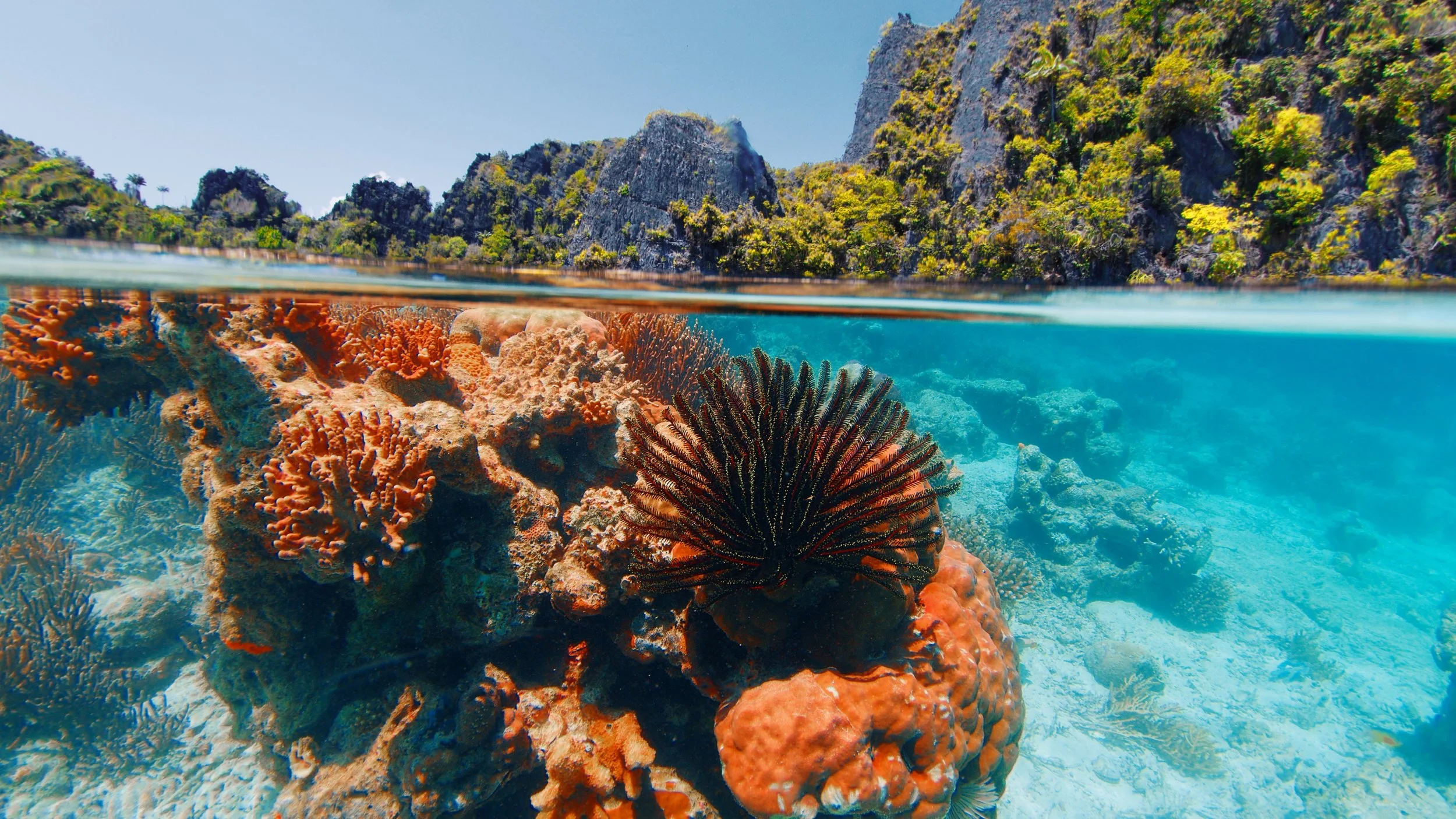Catalan Initiative R&D technician Matteo Agazzi processing coral tissue samples. Picture credit: Javier del Campo.
Breaking Barriers in Coral Genomics
As the global effort to sequence all eukaryotic life moves forward, scientists are encountering a range of technical challenges. Corals highlight many of these hurdles, demanding new strategies for both DNA extraction and genome annotation.
In the Mediterranean Sea, Dr. Javier del Campo and the Catalan Initiative are leading the charge. One of their greatest challenges has been extracting high molecular weight DNA from coral tissues. The team responded by designing coral-specific protocols and refining Hi-C library preparation—innovations that promise to support coral genomics well beyond their region. For both hard and soft corals, effective DNA extraction requires removal of tissues from the coral skeleton, followed by an optimized combination of chemical and physical lysis to maximize yield.
Catalan Initiative R&D technician Matteo Agazzi adding lysis buffer during DNA extraction. Picture credit: Javier del Campo.
While coral genomes are relatively small and therefore easier to assemble, annotation remains a tougher task. The lack of well-annotated references leaves large gaps in biological understanding. To address this, the Catalan Initiative is testing AI-driven annotation tools that may transform the understanding and interpretation of coral genomes.
Ten coral species are already being processed with these new methods, including several on the IUCN Red List of threatened species. Reflecting on this work, Dr. del Campo notes that these protocols “are going to be one of the most valuable products of our project,” providing a roadmap for coral genomics that extends far past the Mediterranean.




